A team of NASA researchers offers a solution to the problem of living on Mars They will deal with it The astronauts of the future - igloo. The proposal seeks to use water ice found under the surface of the Martian soil in order to cover an inflatable structure where the astronauts will live, thus protecting them from the intense radiation on Mars.
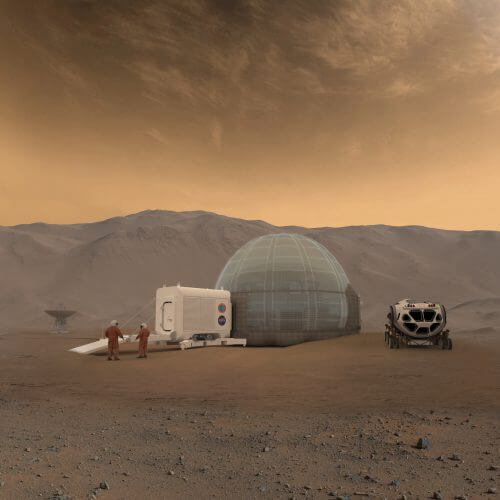
If and when astronauts land on Mars in the future, one of their many problems will be finding shelter from the intense and dangerous radiation that manages to penetrate the Red Planet's thin atmosphere.
The problem can be solved by several methods, such as underground living. However, this solution requires heavy equipment to dig under the surface of the ground, which would require a huge financial investment to launch the equipment from Earth and land it on Mars.
But what if it would be possible to use resources that are already on Mars and thus save weight and budget? A team of researchers gathered at NASA's Langley Research Center offers a more efficient and cheaper solution - using ice that is already on Mars.
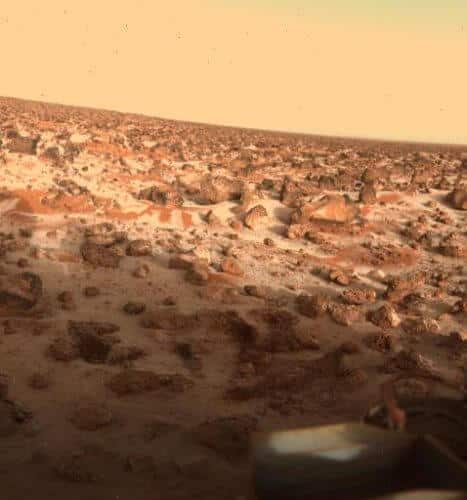
Water can act as a good shield against cosmic radiation, and several places on the surface of Mars are believed to have subsurface water ice. Only about two months ago NASA research, who used the agency's satellites orbiting Mars, found that the Utopia Palatinia region on Mars has water, in the form of underground ice, in an amount equal to the amount of water inLake Superior in the United States. The ice layer is only 1-10 meters below the ground layer, so it does not sublimate in the thin atmosphere of Mars.
According to the proposal, known as Mars Ice Home, the residence where the astronauts will stay will be a torus (annular) and inflatable structure, whose outer layer will have transparent pockets that can be filled with ice.
The layer of ice will be thicker at the top of the building where the radiation will reach its full strength, while in the area of the sides of the building the layer will be narrow, allowing light from the outside to penetrate inside. "All the materials we chose are transparent, so that a certain amount of daylight can penetrate inside and give the feeling that you are at home and not in a cave," said Kevin Kempton, a member of the team that drafted the proposal.
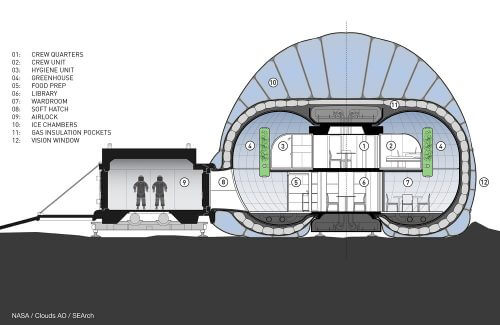
According to NASA, the proposed structure will be light and can be moved and deployed by simple robotic means, and it will be filled with water before the astronauts arrive on Mars. This method has another advantage, as it will be possible to use the water stored in the vehicle to create rocket fuel, which can be used for the launch back from Mars to Earth.
To maintain a pleasant temperature of 22 degrees inside the structure, the layer of ice that covers it will be separated from it by means of a layer of carbon dioxide gas, which can be obtained from the atmosphere of Mars. The structure will be able to accommodate up to four astronauts, and will include living, work and logistics areas. It will also be able to connect to other structures that will be used by the astronauts in their mission to Mars.
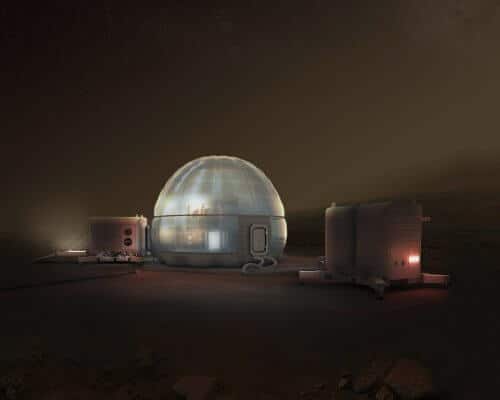
The proposal was formulated as part of a conference of NASA's Langley Research Center where researchers from NASA and designers and architects from academia and private industry gathered to formulate creative ideas for building residences on Mars. "After a day spent identifying the needs, goals and limitations, we quickly evaluated a lot of crazy out-of-the-box ideas and ended up with the current Mars Ice Home design," said Kevin Whippets, an engineer at the Langley Research Center who moderated the conference.
This is not the first proposal to use ice on Mars to protect astronaut habitats on it. In 2015 a concept called Mars Ice House proposed using XNUMXD printed ice to cover a manned structure on Mars. the concept Won first place In a NASA competition to design ideas for using XNUMXD printing to build manned structures on the planet.
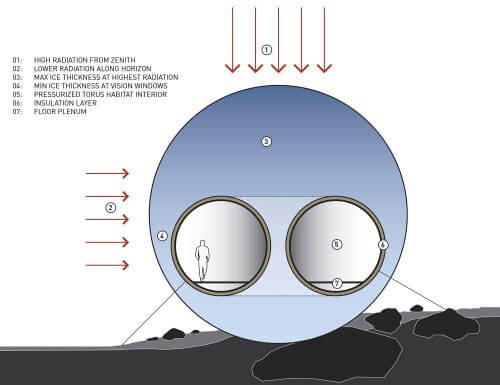

3 תגובות
sounds logical. Water is a good radiation shield.
In a traditional igloo, the snow is also the constructive element of the structure, unlike here.
And what's wrong with covering it with regolith?
How did they miss it in the series "Mars"...